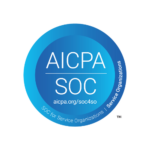
Last month we discussed how having a better understanding of the philanthropic landscape makes it easier to navigate and develop strategies in how we approach our work. This month we also consider how philanthropy is affected by the economic climate. It is no secret that giving decreases during economic downtowns and as uncertainty in the market continues, this will be an important consideration for even our most loyal donors. Promoting planned giving options helps nonprofits create long-term financial stability, especially during tumultuous economic times.
Planned giving can appeal to donors and prospective donors who are reticent in giving cash right now but may be receptive or open to considering a commitment later through their will or through other gift options. Our donors can make a gift now that has no impact on their day-to-day cash flow and this flexibility is more appealing than ever now.
As we look towards the new year, consider including “tax efficient giving” or “smart giving” messaging in your fundraising communications or in conversations with your donors who may have expressed concern about the economic downturn’s impact on their cash flow.
Three ways to give that are smart ways for donors to give include:
- Gifts of appreciated stock: Appreciated assets like stock offer double the tax benefits (by avoiding capital gains taxes and providing a charitable deduction). As the value of cash decreases with inflation, gifts of stock become a more appealing option. If your organization does not already accept shares of mutual funds, consider adding it to your list.
- Gifts from donor-advised funds (DAFs): More than $10 billion was given from Fidelity Charitable DAFs alone in 2021, up 13% from 2020 and a 41% increase from before the pandemic. And as we mentioned last month, according to the National Philanthropic Trust 2022 DAF Report, there is an estimated $234 billion currently held in donor advised funds. To take advantage of this data, identify your DAF donors and let them know how they can support you now through their DAF and then make it easy for them to do so.
- IRA Qualified Charitable Distributions (QCDs): A smart, tax advantageous way for donors over the age of 70½ to give, as the individual does not count the amount of the distribution to charity as part of their taxable income and it counts towards their required minimum distribution. Remind your donors ages 70 and up that they have this option and offer informational resources with instructions on how to make the transfer from their IRA.
- Bequests: Promote bequests and beneficiary designation of retirement accounts and life insurance policies as a means for your donors to make a gift that costs nothing now and is an investment in the future of your nonprofit institution.
Surprisingly, in the last year despite the uncertainty in the economy, charitable giving has continued to trend upward. For many donors, the reason behind this is their ability to donate non-cash assets (particularly through DAFs). Non-cash assets are more resilient to dips in the economic cycle such as recessions. In addition, revenue from bequest distributions or terminated life income gifts are tied to mortality rates which also do not directly correlate to economic cycles. This only further demonstrates the advantages of leaning into planned giving and promoting these creative philanthropic options that our donors may not be aware of. Laying the groundwork for a successful planned giving pipeline can potentially create a reliable source of fundraising revenue for your organization’s future when the economy inevitably takes a turn again.
On a personal note, I’d like to wish you and your loved ones a happy and healthy holiday season. I hope you have found this blog to be helpful in your fundraising journey – Cheers!
—-
Estate planning needs will differ based on personal circumstance and applicable state and federal laws. The information provided here is for educational purposes only and is not intended to provide and should not be construed as providing legal or tax advice. This is general information and should not intended to serve as the primary basis for tax-planning or investment decisions and is not a substitute for the advice from an attorney or financial advisor.
—-
ABOUT THE AUTHOR:
Fritzie Dizon is the Director of Estate and Gift Planning at Scripps Research in La Jolla, California. Fritzie began her career in fundraising as a Development Assistant in Principal Gifts at UC San Diego and then at the Birch Aquarium at the Scripps Institution of Oceanography. Before joining the team at Scripps Research, Fritzie worked with the Office of Gift Planning at Columbia University and Columbia University Irving Medical Center for 9 years. During her time with Columbia, Fritzie honed her knowledge in planned giving and learned to appreciate its impact and power in philanthropy. Her involvement in two campaigns at Columbia University provided unique experiences in the role of planned gifts as it relates to strategic planning, operations, donor relations and marketing.
Fritzie is a graduate of UC Irvine with a degree in Environmental Analysis and Design. She is also a graduate of the Nonprofit Management Graduate Program at the School of Professional Studies at Columbia University. Over the last five years she has also served as an Adjunct Associate Instructor for the School of Professional Studies at Columbia for the Marketing Strategies and Introduction to Planned Giving courses.
When Fritzie isn’t working, traveling, or reading on the beach, she enjoys being an auntie to her four nieces and nephews (her favorite role!).
—-
ABOUT GOBEL SUBJECT MATTER EXPERTS: GOBEL Subject Matter Experts are healthcare philanthropy professionals working in some of the top shops in the country, sharing best practices and insights. For more information about GOBEL’s Subject Matter Expert program, or to suggest a topic for coverage, email jmoody@gobelgroup.com.
